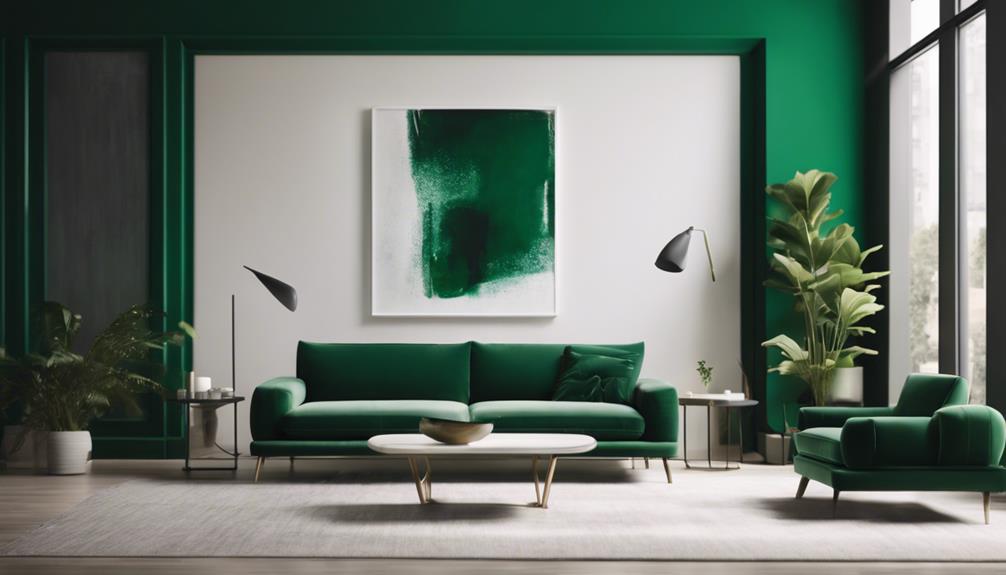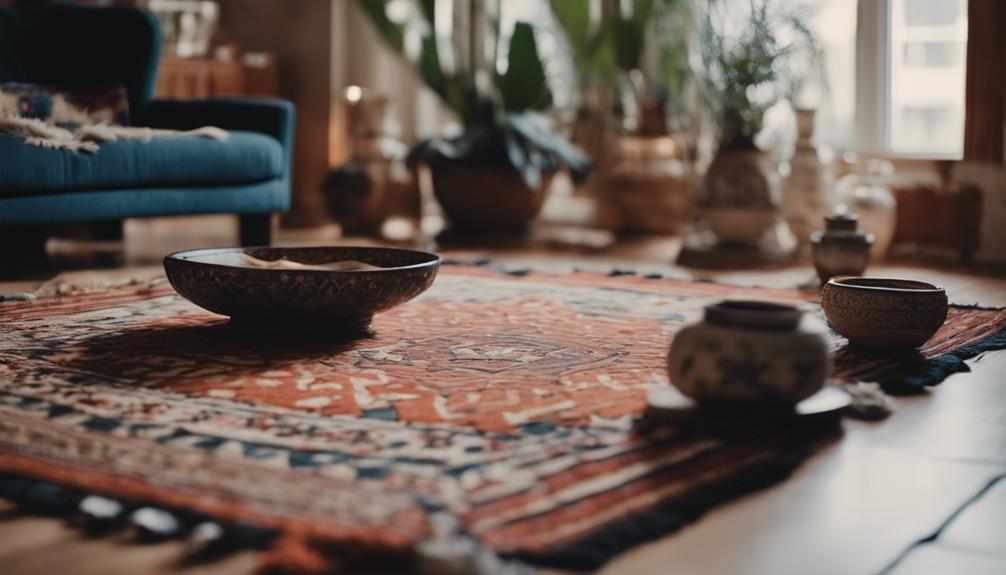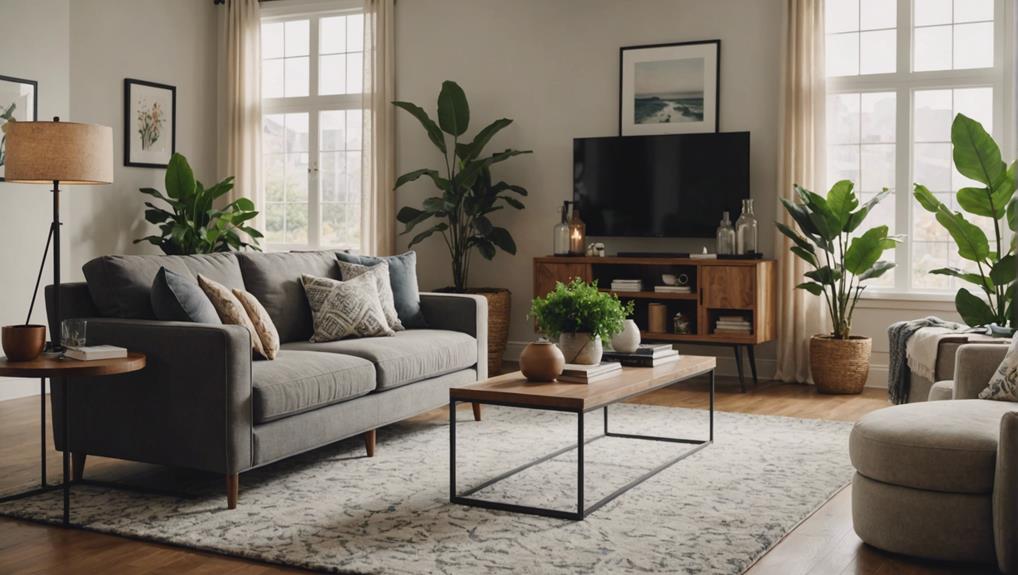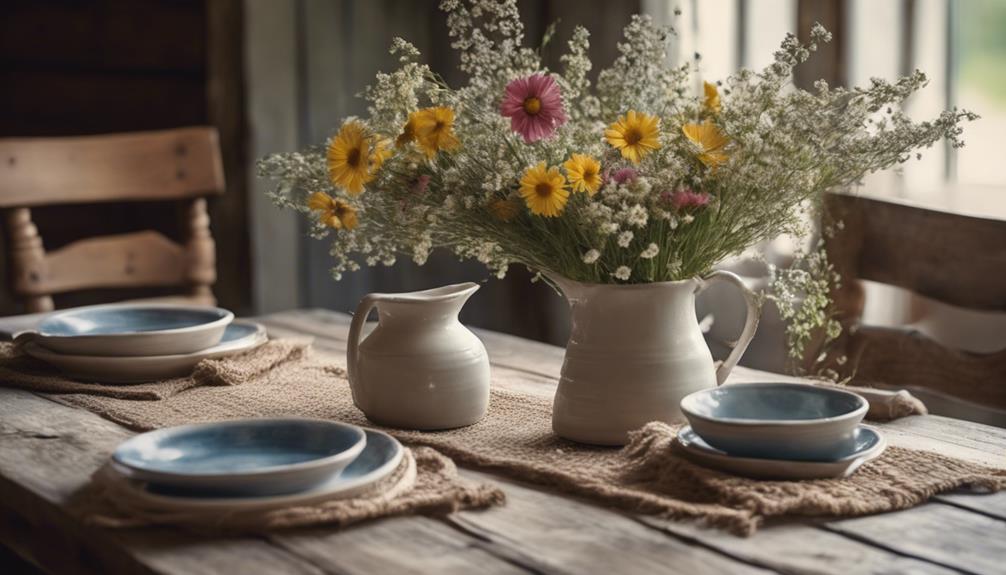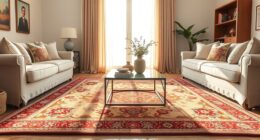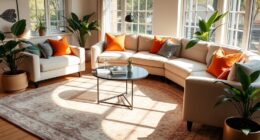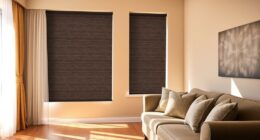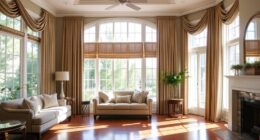By incorporating an accent wall into a room with a mostly white palette, you can create a design focal point that injects visual interest, adds depth, and elevates the overall aesthetic. Bold colors, geometric patterns, and unique textures can add sophistication and modernity to your space. Mixing matte and gloss finishes, contrasting textile elements, and experimenting with wallpaper, molding, or shiplap can further enhance the visual appeal. With 75% of interior designers recommending accent walls for modernizing a space, you're just a few design concepts away from transforming your room. Explore the possibilities of accent walls and discover how they can bring your space to life.
Key Takeaways
• A white wall provides a versatile backdrop for an accent wall, allowing the accent wall to be the focal point of the room.
• Accent walls can incorporate geometric patterns, bold colors, or textures to add visual interest and sophistication.
• Contrasting hues between the white wall and accent wall elevate the room's aesthetic, add depth, and create a modern look.
• Mixing matte and gloss finishes or incorporating unique designs beyond solid colors adds depth and visual interest to the accent wall.
• Using materials like wood, brick veneer, or stone for the accent wall adds texture and sophistication, making the accent wall visually striking.
Accent Walls in Modern Spaces
In modern spaces, you can unleash your creativity and transform your rooms into stunning sanctuaries by using white walls as a versatile backdrop for accent walls that pop with bold colors, patterns, or textures. This design approach allows you to express your creativity and add visual interest to your space.
Accent walls, in particular, can elevate the aesthetic of your room, creating a focal point that draws the eye. In modern design, accent walls often feature sleek finishes like metallic paints, geometric patterns, or minimalist artwork against white walls. A geometric accent wall, for instance, can add a touch of sophistication and modernity to your space.
Bold Colors Make a Statement
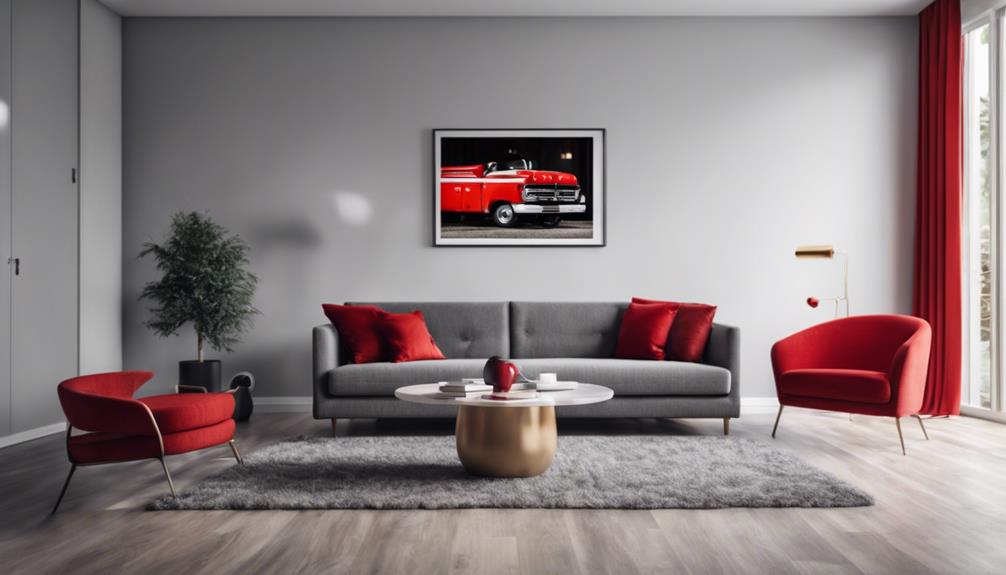
As you begin to experiment with bold colors, you'll discover that there are several techniques to make a statement in your space.
You can try color blocking, where you pair bold hues with white walls to create a visually appealing contrast, or explore accent wall options that add depth and personality to your room.
Color Blocking Techniques
You can create a striking visual contrast against your white walls by using bold colors to make a statement, and color blocking techniques offer a perfect way to do just that. By pairing bold colors like navy blue, emerald green, or mustard yellow with your white walls, you can create a dramatic accent wall that draws attention.
Color blocking with a white base allows for a clean backdrop that enhances the impact of the accent wall, making it stand out even more. When choosing bold colors for color blocking, consider the room's lighting and existing decor for a cohesive look.
Don't be afraid to experiment with different color combinations to find the perfect balance between your white walls and a standout accent wall. Remember, the key is to find a balance that makes a statement without overwhelming the space.
With a little creativity and experimentation, you can create a stunning visual contrast that elevates your room's style.
Accent Wall Options
Bold accent wall colors can make a statement against white walls, drawing attention to a specific area of the room. You can create a striking contrast by choosing accent colors that pop against the neutral backdrop of white walls. For instance, deep navy, emerald green, or rich burgundy can add a touch of sophistication to your space.
If you want to add some personality to your room, vibrant hues like royal blue, mustard yellow, or fiery red can bring energy and excitement. Alternatively, dark shades like charcoal gray, midnight black, or chocolate brown can create a dramatic contrast against white walls, making room features stand out.
Accent walls in jewel tones like sapphire, amethyst, or ruby can bring a luxurious feel to your space. Earthy tones such as forest green, terracotta, or ochre can infuse warmth and natural charm into rooms featuring white walls.
Bold Pattern Mixing
By incorporating vibrant colors and striking patterns on an accent wall, you can create a bold design statement that injects energy and personality into a room. Bold pattern mixing on an accent wall is an excellent way to add visual interest and create a focal point in a space. With white walls serving as a clean backdrop, a bold accent wall can truly shine.
Here are some benefits of incorporating bold pattern mixing on an accent wall:
- Creates a bold design statement that adds energy and personality to a room
- Adds visual interest and creates a focal point in a space
- Can be achieved through wallpaper, stencils, or hand-painted designs for a custom look
- Elevates the overall aesthetic appeal of a room, infusing it with character and unique style
When incorporating bold pattern mixing, striking a balance between the boldness of patterns and the overall color scheme and decor of the room is crucial for creating harmony in the design. By doing so, you can create a stunning accent wall that complements your white walls, making your space truly stand out.
Texture and Pattern Play
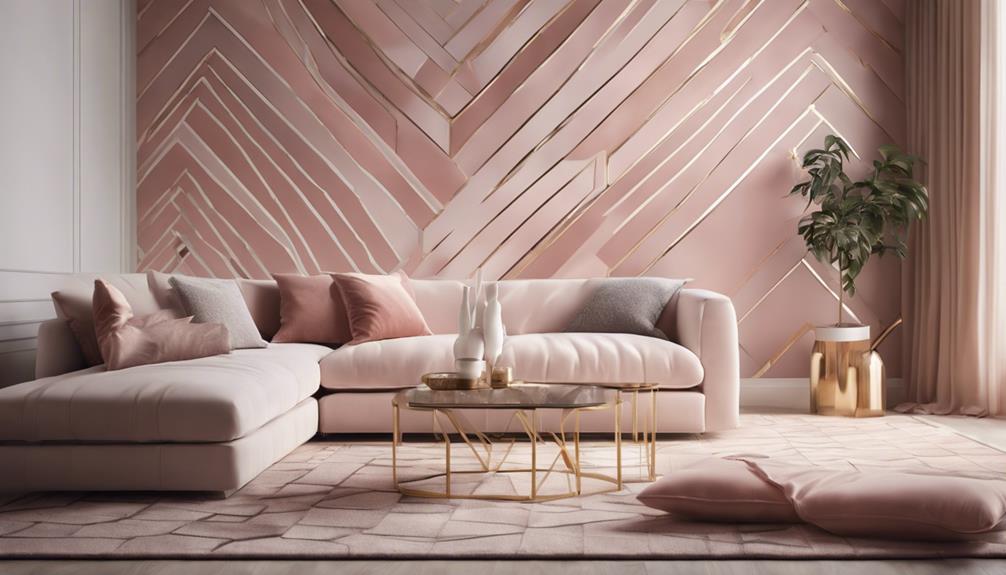
As you explore the world of texture and pattern play, you'll discover that mixing matte and glossy finishes can elevate your accent wall to new heights.
By combining contrasting textile elements, such as smooth fabrics and rough-hewn woods, you'll create a visually striking contrast that adds depth to your space.
Mixing Matte and Gloss
When you combine matte and gloss finishes on your white walls, you'll create a visually striking contrast that adds depth and visual interest to the space. This contrast not only enhances the overall aesthetic appeal of the accent wall but also helps highlight architectural features or design elements.
By incorporating textures like matte paint and glossy finishes, you can add an interesting visual dimension to the space.
Here are some benefits of mixing matte and gloss finishes on your white walls:
- Creates a modern and sophisticated look in any room
- Adds depth and visual interest to the space
- Highlights architectural features or design elements on the accent wall
- Enhances the overall aesthetic appeal of the accent wall
Contrasting Textile Elements
You can add another layer of visual interest to your white walls with an accent wall by incorporating contrasting textile elements that play with texture and pattern.
This can be achieved through the use of textured wallpaper, fabric accent chairs, or even throw pillows and blankets in varying textures like velvet, linen, or jute. The contrast between these textures and the smooth, white wall creates a visually appealing dynamic.
Additionally, mixing patterns such as stripes, geometric shapes, or floral prints in curtains or rugs can enhance the design of the accent wall against the white walls. To maintain a cohesive look, you can utilize textiles in varying shades of white, cream, or ivory, introducing subtle variations in texture and pattern.
By balancing the use of different textiles, you can ensure a harmonious blend of visual elements that elevate the overall aesthetic of the room.
Accent Walls in Neutral Rooms
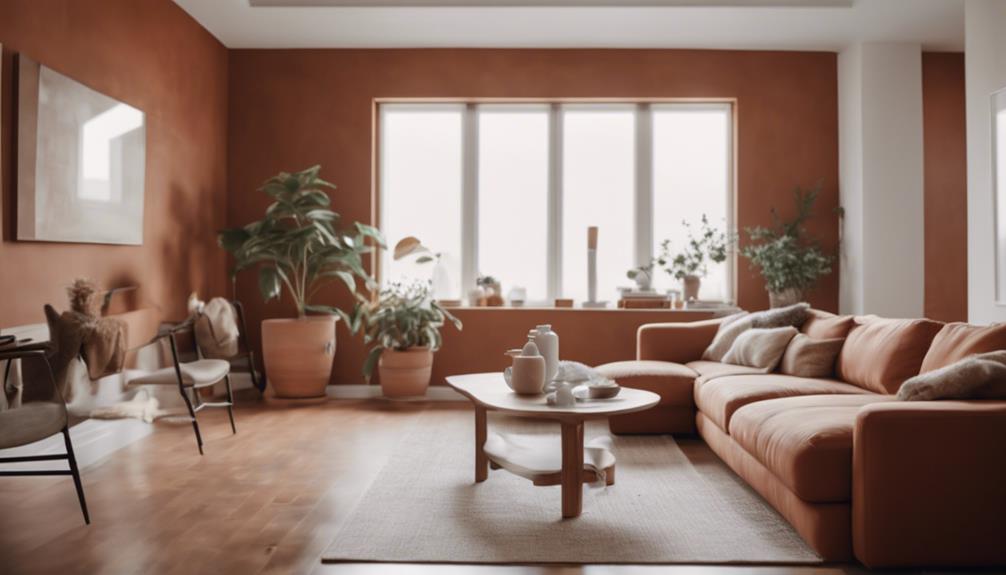
By introducing an accent wall into a neutral room, you can inject personality and style without overwhelming the space. A neutral room provides the perfect canvas for an accent wall, allowing you to add a pop of color and create a focal point without overpowering the space.
With a white backdrop, you can easily switch up your decor style without committing to a specific aesthetic.
Here are just a few benefits of incorporating an accent wall in a neutral room:
- A neutral room with an accent wall creates a clean and minimalist aesthetic while adding depth and visual interest.
- A white wall provides a timeless and classic backdrop for showcasing bold or subtle accent wall choices.
- An accent wall in a neutral room allows you to add a touch of personality without overwhelming the space.
- It elevates the overall design and ambiance of the living space, making it feel more inviting and stylish.
Beyond Solid Colors Only
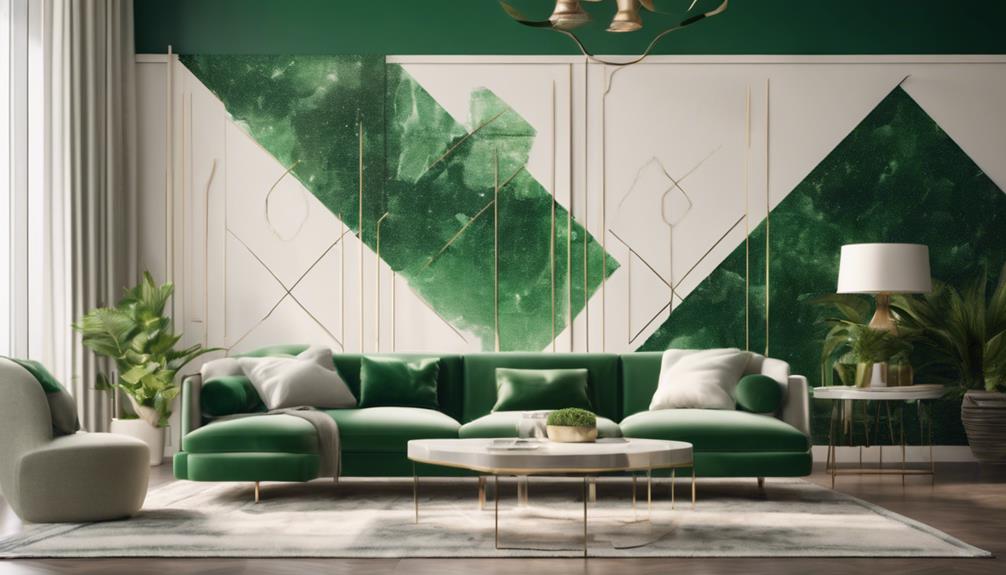
Beyond solid colors, accent walls can take on a new level of sophistication with the incorporation of patterns, textures, or materials that add depth and visual interest to your space.
You can experiment with unique accent wall designs such as stripes, ombre effects, or specialty finishes to elevate the room's aesthetics.
Consider utilizing wallpaper on an accent wall, which offers versatility and a wide range of design options beyond traditional paint colors. If you want to add architectural interest and elegance, incorporate molding designs or shiplap into your accent wall.
White walls with an accent wall can be enhanced by bold patterns, ombre effects, or textured panels for depth and sophistication. By incorporating patterns, textures, or materials, you can create an accent wall that truly stands out.
For instance, you could use wood, brick veneer, or stone to add a natural touch to your space. With these design options, you can create an accent wall that not only complements your white walls but also adds a level of sophistication to your room.
Designing With Contrasting Hues
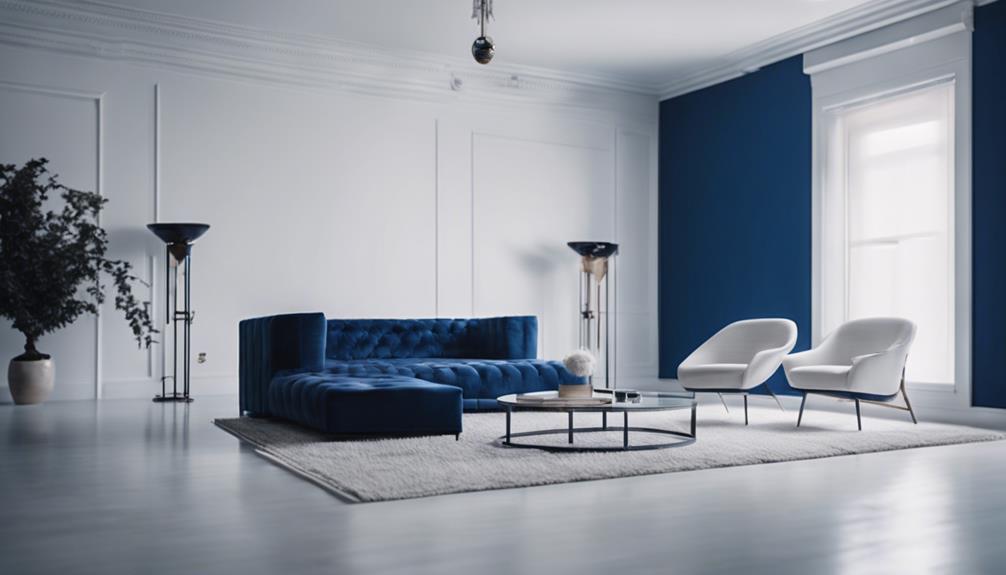
When designing with contrasting hues, a bold or vibrant accent wall against white walls can create a striking visual impact that draws the eye and elevates the room's aesthetic. This clever combination allows the accent wall to take center stage, making a statement and adding depth to the space.
By incorporating contrasting hues, you can create a visually appealing contrast that adds dimension to the room.
Here are some benefits of designing with contrasting hues:
- Elevates the room's aesthetic: A bold accent wall against white walls creates a striking visual impact that draws the eye.
- Adds depth and dimension: Contrasting hues add depth and dimension to the space, making it visually appealing.
- Creates a modern look: The combination of white walls and an accent wall can create a modern and sophisticated look in any room.
- Allows for creative expression: With contrasting hues, you can express your personal style and add a touch of personality to the space.
Accent Walls for Visual Interest
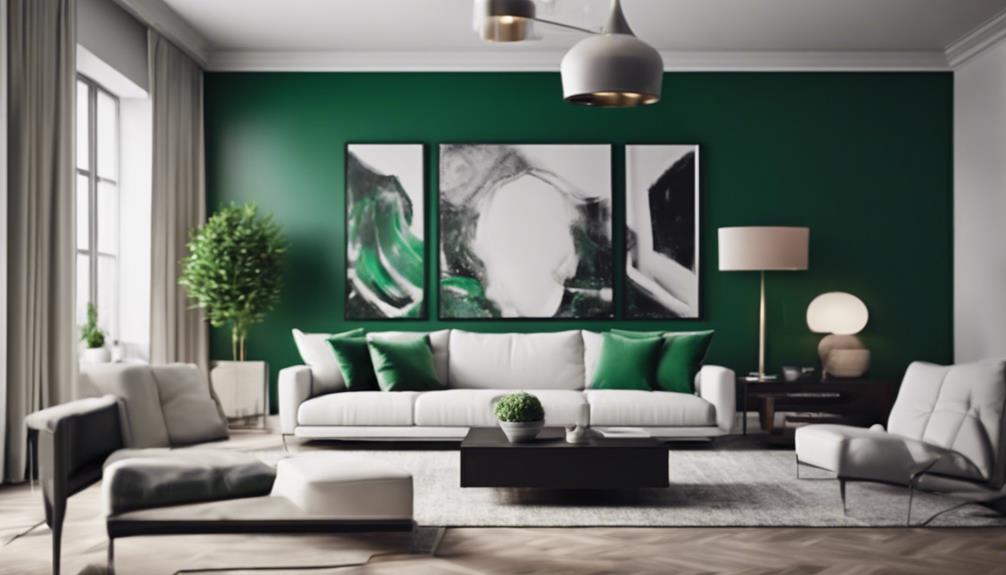
One accent wall is all it takes to inject visual interest into a room, drawing your eye to a specific architectural feature or focal point. By incorporating an accent wall, you can add depth and visual appeal to your space, making it more engaging and dynamic.
When paired with white walls, the contrast is striking, creating a beautiful visual harmony that elevates the overall aesthetic of the room. Accent walls serve as a design focal point, drawing your attention to a particular area of the room, such as a stunning fireplace or a floor-to-ceiling window.
This visual interest can be further enhanced by using bold colors, intricate patterns, or unique materials, allowing you to express your personal style and creativity. By incorporating an accent wall, you can transform your space, adding personality and visual appeal to your room.
With white walls providing a clean backdrop, your accent wall can take center stage, creating a stunning visual display that showcases your personal taste and style.
Frequently Asked Questions
What Color Accent Wall Goes With White Walls?
When choosing an accent wall color to pair with white walls, you've got plenty of options.
You might opt for a bold, striking contrast like black, charcoal, or navy, which creates a dramatic focal point.
Alternatively, you could introduce warmth with mustard yellow or terracotta, or add sophistication with deep emerald green or rich burgundy.
If you prefer a softer look, pale pastel shades like blush pink or light mint green can bring a serene ambiance to your space.
Are Accent Walls Out of Style in 2024?
You're wondering if accent walls are out of style in 2024. Rest assured, they're still a popular design choice, offering a versatile way to add visual interest and depth to a room.
In fact, many interior designers recommend accent walls as a stylish way to showcase architectural features and create focal points.
Trends show that accent walls are evolving with new colors, textures, and patterns, adapting to modern design preferences.
When to Not Do an Accent Wall?
When deciding whether to add an accent wall, you should consider skipping it in certain situations. If the wall has structural issues or damage, it's best to avoid drawing attention to it.
Additionally, refrain from adding an accent wall in rooms with busy visual elements, small spaces, or low ceilings, as it can create a cluttered or cramped feel.
What Is the Rule of Thumb for Accent Walls?
When selecting an accent wall, you should follow an important rule of thumb: choose a wall that naturally draws the eye. This might be a wall with architectural features or a focal point.
This strategy guarantees that your accent wall complements the room's design rather than clashes with it. By doing so, you'll create a visually appealing space that showcases your accent wall's beauty without overwhelming the area.
Conclusion
As you explore the world of accent walls, remember that bold colors make a statement, textures and patterns add depth, and neutral backgrounds provide a clean canvas.
Beyond solid colors, you can experiment with contrasting hues, patterns, and textures to create visual interest.
By incorporating accent walls into your design, you'll add a touch of personality to your space, creating a unique and enthralling atmosphere that's all your own.
